
What are the Hydropowerplants?
The hydropower plant converts the kinetic energy of water into electrical energy. The kinetic energy in water is due to the gravity of water falling from higher to lower head.Kinetic energy rotates the turbine, and the turbine relates to the alternator to generate electrical energy. A hydroelectric power plant is a non-custom power plant. And hydroelectric powerplant is also one of the renewable sources of energy.
To get kinetic energy from the water, the reservoir or dam is built at a high head from the ground level. The starting cost of a hydroelectric power plant is very high. But the running cost of the plant is very low. In the world, 16% of total power is produce from hydropower plants. The following are 10 Largest Hydropower Plant in the World.
Components of the hydropower plant
- Dam: A dam is a basic component, which holds back water to form a reservoir. This raises the water level, creating potential energy that can be converted into electricity.
Reservoir: The reservoir stores a large amount of water. It serves as an important resource to control the flow of water and ensure a constant supply for power generation.
Intake Structure: The intake structure at the base of the dam allows water to enter the hydroelectric system. It includes gates and screens to regulate flow and prevent debris from damaging components.
Penstock: A penstock is a pipeline that transports water from the reservoir to the turbine. It maintains high pressure, improving energy transfer to the turbine blades.
Turbine: Turbines are important for converting the kinetic energy of flowing water into mechanical energy. There are different types of turbines, including Francis, Pelton, and Kaplan, each suitable for a specific hydropower plant configuration.
Generator: The generator is used to converts the mechanical energy into electrical energy. It consists of a rotor and a stator, with the rotor connected to the turbine shaft.
Transformer: Transformers step up the voltage of the generated electricity for efficient long-distance transmission. They are essential to minimize energy loss during transportation.
Powerhouse: A powerhouse is the central structure where turbines, generators, and other critical equipment are housed. It provides a controlled environment for efficient power generation and maintenance.
Switchyard: The switch yard manages the electrical output from the generator. It includes switches, circuit breakers and transformers to regulate and distribute electricity.
Transmission Lines: High voltage transmission lines carry electricity from hydropower plants to distribution centers and end users. They play an important role in providing power over long distances.
Forebay: A forebay is a place at the entrance to a reservoir or hydropower plant where water is temporarily stored before entering the penstock. It helps regulate the flow of water and ensures a constant supply to the turbines.
Surge Tank: A surge tank is a structure in a hydropower system designed to absorb sudden changes in water flow, prevent pressure fluctuations, and ensure stable operation. This helps protect the penstock and turbine from damage during rapid changes in water flow.
Draft tube: A draft tube is a component located below the turbine in a hydropower plant. This allows the water to exit the turbine and easily flow back into the stream or tillers. The draft tube helps increase turbine efficiency by reducing backflow resistance.
Tailrace: A tailrace is a channel or waterway through which water exits a hydropower plant after passing through a turbine. It returns the water to the natural water source below the river or plant. Taylors ensure controlled release of water into the environment.
List of 10 largest hydropower plant in the world
Three gorges China Hydropower Plant (capacity 22.5GW)
The 22.5GW Three Gorges hydroelectric power plant is located in Yichang, Hubei province, China, is the world’s largest hydropower station. It is a conventional impoundment hydropower facility using the water resource of the Yangtze River. This project is operated by China Three gorge Corporation (CTGC) through its subsidiary China Yangtze Power.
Construction of the CNY203bn ($29bn) PowerStation project was started in 1993 and completed in 2012 it took about 20 years for completion. A 181m-tall and 2,335m-long gravity dam was construct as a part of the Three Gorges project. This powerplant consists of 32 turbine / generator units rated 700MW each turbine, and two 50MW power generators. Six foreign groups were involved in the supply of equipment for the project, including Alstoma which supplied 14 Francis turbine units.
The production units of the Three Gorges power station were authorizing between 2003 and 2012. Annually output power of the plant is estimated at 85TWh. The generated power is supplied to nine provinces and two cities of China.

Itaipu, Brazil and Paraguay Hydropower Plant (capacity 14 GW)
The pinpoint of the 14GW Itaipu hydroelectric power plant Parana River, at the border between Brazil and Paraguay. The resources are operated by Itaipu Binational.
Construction of the plant start in 1975 and the erection was completed in 1982. The cost for this project was about $19.6bn. A union of US-based IECO and Italy based ELC Electro consult carried out the construction. Power production at Itaipu was began in May 1984.
The Itaipu hydro-electric service supplied 15% of Brazil’s energy consumption and 90% of the energy eat up in Paraguay in 2018. It includes of 20 generating units with a capacity of 700MW each. It generates 103.1 million MWh in 2016, which made it the largest generating hydroelectric power plant in the world at that time.
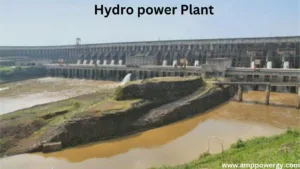
Xiluodu, China Hydropower Plant (capacity13.86GW)
Xiluodu hydropower plant construct on the Jinsha River in central Sichuan Province of China has an instated capacity of 13.86GW. Developed by CTGC, the government launch it in 2013 and connect it to the grid in June 2014.
This power plant marks the world’s first ultra-high concrete double-curvature arch dam at an upgrading of 610m. The total height of the dam is 285.05m and the reservoir region is 454,400km².
18 Francis turbine-generator units of 770MW each is put in this hydroelectric power plant. The produced power is transmitted to consumers through the State Grid and China southern power grid. The plant currently produces an average output of 57.07TWh a year, which is look for to increase to 616.2TWh in the long term.
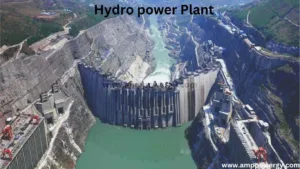
Guri, Venezuela Hydropower Plant (capacity 10.2GW)
This project, also known as the Simón Bolívar hydroelectric power station, is based on the Caroni River in the Bolívar State of southeastern Venezuela. CVG Electrification del Caroni retain and handle the plant.
The establishment of the power project started in 1963. It was completed in two phases; the first phase is completed in 1978 and the second phase is completed in 1986. The power plant includes 20 producing units of different capacities ranging between 130MW and 770MW.
Alstom was granted two contracts in 2007 and 2009 to renovate four 400MW units and five 630MW separately. Andritz gain a contract to provide five 770MW Franci’s turbines for the powerhouse II of Guri in 2007. The Guri power plant provides approximately 12,900GW/h of energy for Venezuela.
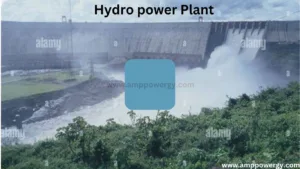
Belo monte, Brazil Hydropower Plant (capacity 9.39GW)
This hydropower project was under construction on the lower reach of the Xingu River, in Pará, Brazil, was installed with 9.39GW producing capacity as of September 2019. When fully authorize with its organized 11.2GW capacity in 2020, it will be the world’s fourth largest hydroelectric power plant.
The Belo Monte powerplant is retain and run by Norte Energia, an alliance led by the Brazilian electric utility company Eletrobas (49.98%). The establishment on the $11.2bn project was begin in March 2011, while running were begin with the commissioning of the first turbine generator unit in April 2016.
The project consists of two dams and two powerhouses, as well as a main powerhouse equipped with 18 Francis turbines of 611MW capacity each, and additional powerhouse with six 38.85 MW Bulb turbines. By September 2019, 15 of the 18 turbines in the main powerhouse and all six Bulb turbines in the additional powerhouse were commissioned.
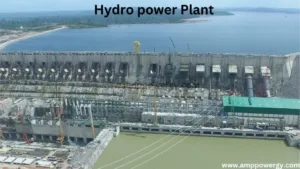
Tucurui, Brazil Hydropower Plant (capacity 8.37GW)
The Tucuruí Hydropower is located on the lower Tocantins River in Tucuruí, Pará, Brazil, was constructed in two phases and has been producing since 1984.
establishment of the Tucuruí hydropower project begin in 1975.the total cost of this project was $5.5bn. The first phase Tucuruí Hydropower was finished in 1984. It elaborates construction of a concrete gravity dam which Hight is78m tall and its length is 12,500m long, 12 producing units with a capacity of 330MW each, and two 25MW extra units.
Establishment of the 2nd phase to add a new powerhouse was begin in 1998 and completed in late-2010. It involves insertion of 11 producing units with 370MW capacity each. A union of Alstom, GE Hydro, Inepar-Fem, and Odebrecht give equipment for the two phases. The power station give energy to Belém town and the nearby area.

Grand coulee, USA Hydropower Plant (capacity 6.8GW)
The 6.8GW Grand Coulee hydropower project based on the Columbia River in Washington, US, was constructed in three phases. Retained and run by the US Bureau of Reclamation, it begins running in 1941. The annual producing capacity of the powerplant is more than 24TWh.
The Grand Coulee hydropower plant comprise of three power plants and a concrete gravity dam 168m tall and 1,592m long. Its establishment begin in 1933 and the left and right power houses, comprises of total 18 Francis turbines rated 125MW and three 10MW extra units, were operational by 1950.
The third power plant is comprised of three 805MW units and three 600MW units. Its establishment started in 1967 and all six units of the plant were ordered between 1975 and 1980. The overhaul of three 805MW units at the third station started in 2013. Two of the units were maintained in April 2016 and March 2019 while the third unit’s maintenance is expected to be completed by the end of 2020. The maintenance of the remaining three 600MW units is set to begin in 2024.
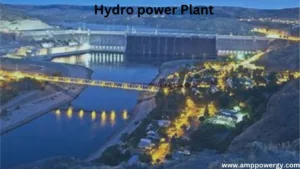
Xiangjiaba, China Hydropower Plant
(capacity 6.4GW)
The Xiangjiaba hydropower plant was the third power plant to be developed and run by CTGC. It is constructed on the outlet of Jinsha River canyon, which is based in Yibin City of Sichuan and Shuifu County, Yunnan, China.
The Hight of the Xiangjiaba dam is 162m, and the length was 384m. The reservoir region is 458,800km² and the reservoir capacity is 5.163 billion cubic meters. The power plant is put with eight units of 800MW each and consists of different structures for flood discharge, deflection, power generation, and ship lift.
All eight producing units of the power plant were in run in 2019. The annual producing capacity of the power plant is 30.88kWh, which is look forward to increasing to 33.09kWh in future.
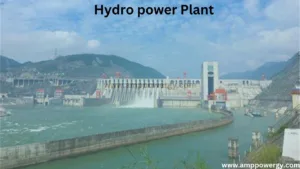
Sayano-Shushenskaya, Russian Hydropower Plant
(capacity 6.4GW)
The Sayano-Shushenskaya hydropower plant based on the Yenisei River in Sayanogorsk, Khakassia, Russia, is run by Rus Hydro.
Establishment of the power plant begin in 1963 and was completed in 1978. An arch-gravity dam 242m tall and 1,066m long was erected as part of the project. The power plant comprises of ten Francis generating units with a capacity of 640MW each. It produces 23.5TWh of electricity a year, of which 70% is delivered to four aluminum smelters in Siberia.
The plant was shut down for the moment in 2009 following a mishap, which caused damage to the turbines. It starts again in 2010, after the issues were solved. Ten new units with 96.6% efficiency are thought to be installed at the plant at an approximate cost of $1.4bn.

Longtan, China Hydropower Plant (capacity 6.3GW)
The Longtan hydropower project based on the Hongshui River in Tian’s County, Guangxi, China, is the sixth largest in Asia.
This hydroelectric power station includes nine Francis 700MW producing units. The Longtan dam is a roller-compressed solid materials gravity dam its Hight is 216m and width is 832m. The power plant is retained and run by Longtan Hydropower Development. It was plan by Hydro China Zhongnan Engineering and construct by Sino hydro.
Establishment of the Longtan hydropower project begin in May 2007. The first producing unit was commissioned in May 2007. The project became fully run in 2009. The turbine generators for the plant were given by Voith, Dongfang, Harbin, and Tianjin. The annual producing capacity of the plant is approximately to be 18.7TWh.

Read also:
Frequently Asked Questions (FAQs)
Q: How does a hydropower plant work?
Ans: Hydropower plants generate electricity by using the energy of flowing water to turn turbines, which then generate electricity.
Q: What is the important component of a hydroelectric power plant?
Ans: A hydropower plant usually consists of a dam, reservoir, intake structure, penstock, turbine, generator and transmission lines.
Q: What is the role of a dam in hydropower generation?
Ans: A dam creates a reservoir, storing water at a higher elevation. When the water is released, the water flows through a turbine, which converts its potential energy into electricity.
Are there different types of hydropower plants?
Ans: Yes, there are different types, including run-of-river, reservoir-based, and pumped-storage hydropower plants. Each has unique properties and applications.
Q: What is the age of a hydropower plant?
Ans: Lifetimes can vary, but many hydropower plants have an operational life of 50-100 years, depending on maintenance and technological development.
Q: How environmentally friendly is hydropower?
Ans: Although hydropower is considered a clean energy source, building dams can have environmental impacts, affecting ecosystems and aquatic habitats. Advances in technology aim to minimize these effects.
Q: Can hydropower be used for small scale applications?
Ans: Yes, small-scale hydropower systems, such as micro- and mini-hydropower plants, are designed to produce electricity at a local level, often in rural or remote areas.
Q: What is pumped storage hydropower?
Ans: Pumped storage involves using excess electricity to pump water from a lower reservoir to an upper reservoir during periods of low demand. when needed more power the stored water is released.
Q: What challenges does hydropower face?
Ans: Challenges include environmental concerns, potential impacts on fish migration and displacement of communities during dam construction. Sustainable practices are also required in dam design and operation.
Q: How will we compare hydropower to renewable energy sources?
Ans: Hydropower is a mature and reliable renewable energy source, providing constant and controllable electricity production. It complements other renewable sources like solar and wind, which can be intermittent.

It’s good
About electrical engineering
Electrical
Great article
Great work so many thanks for your good and lovely information
Keep it up 👆
Great work so many thanks for your good and lovely information
Keep it up